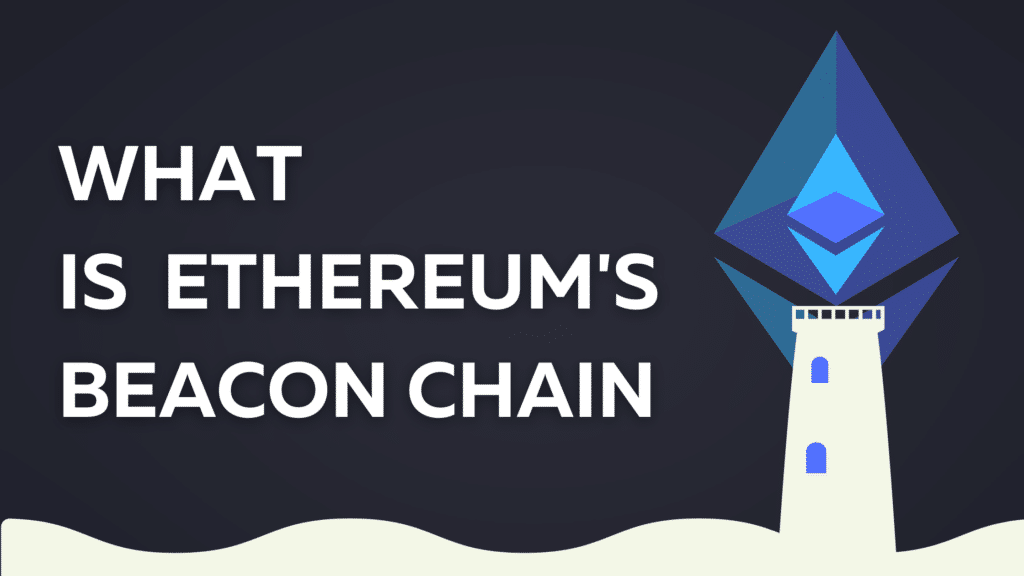What is the Ethereum Beacon Chain?
The Ethereum Beacon Chain is Ethereum’s new consensus layer. New blocks are created and added to the blockchain via this layer.
The Long Definition
The Beacon Chain is the consensus layer of the Ethereum protocol. This is where the network is secured via a proof-of-stake (PoS) consensus mechanism. It keeps the network in check by coordinating and managing validators and setting the rules for achieving consensus.
However, it cannot run smart contracts. This is done on Ethereum’s execution layer.

History of the Beacon Chain
When Ethereum launched in 2015, it didn’t ship with the Beacon Chain. The chain was launched much later, in December 2020. It was the crucial part of a plan to change the network’s consensus mechanism from proof-of-work (PoW) to proof-of-stake (PoS).
But the change didn’t happen immediately. Throughout the first two years, the Beacon Chain ran parallel to the original PoW protocol. It did not affect the Ethereum mainnet in any way. Ethereum engineers spent this time testing it to ensure that the PoS mechanism would work once connected to the mainnet.
This would happen in September 2022. It was dubbed The Merge – the coming together of Ethereum’s consensus layer (Beacon Chain) and the execution layer. It shifted the protocol’s consensus mechanism from PoW to PoS.
Why is the Beacon Chain Important
Introduced a new consensus mechanism
Ethereum was originally a PoW blockchain, but thanks to the Beacon Chain, things have changed. The chain receives Ethereum transactions and bundles them into blocks before adding them to the blockchain. All this is done using a proof-of-stake consensus mechanism.
Proof-of-stake has one key advantage over proof-of-work– it requires less energy. In the previous era, Ethereum relied on miners to validate blocks and add them to the blockchain. This involved racing to solve complex cryptographic puzzles.
It required a lot of computational power. Miners were required to consistently invest in more powerful and more power-hungry equipment in order to win. Thus, using PoW was an extremely energy-intensive affair.

PoS takes a different approach. It uses validators in place of miners. Validators are not required to invest in powerful mining equipment. Rather they are asked to stake their ether (ETH) and run the blockchain’s software on their computers. Staking involves locking up crypto in the protocol.
In this case, validators are required to lock up a minimum of 32 ETH. The network then selects at random the person to write the next block based on how much ETH they have staked. Compared to mining, this process requires a lot less energy.
Setting up for future upgrades
The Beacon Chain also sets up Ethereum for upgrades that are only possible with a PoS blockchain. One of these is sharding. It involves splitting the blockchain’s database into smaller pieces known as shards.
Sharding is expected to make the protocol much more scalable by increasing the transaction processing speed. Currently, Ethereum can handle 15-30 transactions per second (TPS). Once sharding is implemented, this number will be in the tens of thousands.
Want to join the Dypto journey? Follow our socials!